Shanghai Wildlife Park
Shanghai Wildlife Park, located at 178 Nanliu Highway, Pudong New Area, Shanghai, is the first National Wildlife Park in China built by the Shanghai Municipal People's Government and the State Forestry Administration of China. It covers 153 hectares (about 2300 mu) and is 35 kilometers away from the center of Shanghai. It was officially opened to the public on November 18, 1995.
On May 8, 2007, the Shanghai Wildlife Park was officially approved by the National Tourism Administration as a national AAAAA tourist attraction. There are more than 200 species of rare wildlife from home and abroad, including giant panda, golden monkey, golden antelope, crested ibis, giraffe, zebra, antelope, white rhinoceros, cheetah and so on. There are more than 10,000 animals in the park. The park is divided into two major tourist areas: car access area and pedestrian area.
Shanghai Wildlife Park is a theme park integrating wildlife breeding, exhibition, breeding and protection, popular science education and leisure and entertainment. It has won the honorary title of national popular science education base from 2015 to 2019.
Historical development
In 1995, the Animal Stadium of the Performance Department of Shanghai Wildlife Park was built. It is the earliest special venue for animal performance in Shanghai Wildlife Park.
In November 1996, an animal performance hall, also known as the Baibeast Mountain Performance Hall, was built. Since its completion, Bai Zhu Shan Performing Hall has hosted many wonderful themes such as National Animal Games, Animal Fashion Show, New Year's Eve and so on. The level of animal performance is in the leading position in China.
In 1996, we built the Sea Lion Performance Hall, where we can see the most wonderful sea lion performances in the world.
On October 6, 1998, after the establishment of diplomatic relations between China and South Africa, Shanghai Wildlife Park welcomed a group of special guests - South African wildlife. The group of nine species and 150 animals arrived in Shanghai, China, by special plane, including 34 giraffes, and other white rhinoceroses, antelopes, white zebras, gazelles, blue horned horses, black horned horses and South African sea lions.
On May 8, 2007, the Shanghai Wildlife Park was officially approved by the State Tourism Administration as a national 5A tourist attraction.
geographical position
Shanghai Wildlife Park, the largest national wildlife park in China, is located at 178 Nanliu Highway, Pudong New Area, Shanghai. It covers 153 hectares and is 35 kilometers away from the urban area. The central location of the park is 121 7', and 31 0.1'.
Main venues
Pedestrian area
Walking area can not only see many rare wildlife such as giant pandas, African elephants, Asian elephants, giraffes, chimpanzees, gibbons, lemurs, flamingos, crested ibises and so on, but also show many unique animal behavior and interactive experience.
Flamingo exhibition area
The Flamingo exhibition area, where nearly 200 birds live in groups, is the first thing that catches the eye of the Shanghai Wildlife Park. Therefore, flamingos have become "greeting birds" in Shanghai Wildlife Park. Flamingo, named for its fiery red color, is mainly distributed in India, Africa and Central and South America. Life span is 20-30 years, feeding on shrimps, clams, insects, algae and so on. Red is not the original feather color of flamingos, but comes from the plankton they ingest. At the same time, the brighter the red, the stronger the flamingos'physique, the more attractive they attract the opposite sex flamingos, the better their offspring will be.
Kangaroo slope
The Kangaroo Slope of Shanghai Wildlife Park covers an area of 2,000 square meters. It is spacious and bright on the green lawn. More than 30 Grey Kangaroos and Red Kangaroos live here. They are gentle. Tourists can feed kangaroos reliably near kangaroos. They can also touch kangaroo babies. They can also hold the hand of their mother and take pictures with them.
Takin Museum
The Antelope Hall of Shanghai Wildlife Park covers an area of 2,000 square meters. The exhibition area is decorated with rockeries, waterfalls, tall trees, material tanks, water tanks, stones and sand on the ground. The water permeability is quite good, which is very helpful to the health of animals. One of the biggest characteristics of takin is rock climbing, so the biggest feature of this venue is that it is designed according to animal habits to meet the requirements of takin climbing.
Giraffe Pavilion
The Giraffe Pavilion Walking Area of Shanghai Wildlife Park covers an area of more than 2000 square meters. There are tall trees, material troughs and water troughs in the pavilion. The ground is composed of stone sand ground and grassland. Tourists can feed giraffes with leaves and experience the pleasure of close contact with giraffes.
Giant Panda Museum
In the panda exhibition area, half-year-old twins of giant pandas move their round bodies to meet visitors formally.
Sino American Museum
Chinese and American tapirs live in dense tropical rainforests. They are good at swimming and climbing. They like to live near water sources and rich vegetation. In order to make their living environment as close as possible to their home, the keepers of Shanghai Wildlife Park have used their brains to deploy rockeries, waterfalls, trees, shrubs and grasslands in the exhibition area. This ecological display is more in line with the life habits of Chinese and American tapirs, so that they can swim, Wade and climb as much as they like.
Hippopotamus house
The Hippopotamus Pavilion covers an area of 2200 square meters. The jujube and palm trees are scattered in the courtyard. The atmosphere of the tropical rainforest makes the hippopotamus live as if they had returned to their hometown. The hippo "Sibao" from Ningbo, the hippo "auspicious" from Nanning and the hippo "Sasha" from Guangzhou form a "happy big mouth" combination. They are all about two years old, young and lively.
African Elephant Exhibition Area
The African Elephant Exhibition Area covers more than 20 acres. It combines elements of African customs and simulates the natural environment for design. The trees and shrubs are lush. The scattered rocks, the undulating terrain and the surrounding streams make the African elephants live in the original ecological natural environment. Twelve elephants from remote Africa, aged about 4 years old, weighed about 1 ton.
Asian Elephant Interactive Experience Zone
The Asian elephant exhibition area of Shanghai Wildlife Park covers an area of 30 mu and is the largest Asian elephant group in East China. The exhibition area simulates the ecological environment of Asian elephants and has a strong subtropical flavor. The exhibition area is divided into two parts, one is the behavior exhibition area, the other is the interactive area of tourists. In the behavioral exhibition area, Asian elephants collectively show visitors their housekeeping skills: moving wood, sprinkling, watering flowers, making beauty and so on.
Zebra court
Zebra Garden is located in the middle of Asia Elephant Exhibition Zone and Baibeast Mountain Performing Stadium. It is nearly 1500 square meters. The exhibition area is ecologically designed with trees and shrubs. More than ten zebras take a leisurely walk. Visitors can watch zebras at close range and listen to the nurses to explain their scientific knowledge. Zebras and ostriches from Africa accompany each other to welcome tourists from all directions and bring more joy to everyone.
Mountain Hall
The Mandarin Hall of Shanghai Wildlife Park covers an area of about 2500 square meters. In order to facilitate viewing, it is divided into indoor and outdoor exhibition areas. The terrain of outdoor exhibition areas is continuously elevated from outside to inside in a slope-like shape. Dry ditches are used to isolate them. There are evergreen shrubs and trees planted inside, and two-story circular wooden casual pavilions with huge stones and herringbone roofs are placed in the middle. The exterior walls of indoor exhibition areas are made of thick bullet-proof steel glass, which can be viewed on both sides by tourists, and windows on the upper part of houses are added to increase rooms. The lighting and ventilation are also equipped with ropes, wheel rings, wave wood and parallel bars for their leisure, play and fitness needs.
Gibbon Museum
The Gibbons raised and exhibited in the Gibbon House belong to the White-cheeked gibbon. There are now five gibbons. They belong to mammals, primates and gibbons. They are distributed in Guangxi, Yunnan, China. They can be seen in Vietnam, Myanmar, India and other countries.
Tiger Predatory Exhibition Area
The tiger poaching exhibition area of Shanghai Wildlife Zoo shows the behavior of climbing trees and poaching by Siberian tigers.
National Ritual African Lion Exhibition Area
The National Ritual African Lion Exhibition Area covers an area of about 6700 square meters. It imitates Africa's natural environment and is full of bakery and other plants. As wild lions bred in non-artificial environment, "Jinjin" and "Feifei" are very alert and alert. As long as they see people approaching, they will show their fangs and give out fierce roars in an attempt to scare off the offenders with lion roaring skills.
Lion tiger Museum
A pair of lions and tigers are on display in the lion and tiger exhibition area of Shanghai Wildlife Park. Ligers and tigers belong to the carnivorous order, cats, the English name liger, mainly the product of human influence or under the main cause, is the offspring of male lions and female tigers mating.
Museum of monkeys
Black-capped and white-fronted capuchin monkeys are on display at the Monkey Hall of Shanghai Wildlife Park. Black-capped macaques are the most curly-tailed monkeys. They have thick black hair on their heads and look like they have a black cap. So they are called black-capped macaques. The white-fronted capuchin monkey is named for its white forehead coat.
Chimpanzee Pavilion
The chimpanzee exhibition area of Shanghai Wildlife Park fully considers the living environment of chimpanzees, and creates an ecological and healthy exhibition hall to provide a more comfortable and suitable living environment for chimpanzees. The exhibition area is full of rocky hills, clear rivers and rivers. The greening arrangement shows the style of tropical rain forest. The facilities are complete, which fully meets the life habits of chimpanzees.
Golden Monkey Island
Located in the lake water opposite the Small Animal Paradise, the Golden Monkey Island of Shanghai Wildlife Park has the largest population of golden monkeys in captivity in China. More than 50 Sichuan golden monkeys have become three groups, where they rest and live in peace.
Small Animal Paradise
Small Animal Paradise is the most distinctive and rich exhibition area in the park. Here are the world's largest rodents - dolphins; zebra lemurs and ring-tailed lemurs from Madagascar; elf-tailed mongooses and ear foxes; powerful sub-adult lions and tigers; and a variety of rare animals from five continents. Tourists in animal nurseries can learn about the artificial feeding of various small animals, and have the opportunity to hold a small tiger by hand. Lions, bears and other animals. There are also pigs, goats and rabbits in the exhibition area for children to participate in feeding.
Tropical Bird Park
Tropical Bird Garden is located in the small animal park. There are more than ten kinds of bird parrots, giant billed birds, blue cranes, red parrots and so on. Nearly 100 colorful bird friends are gathered in the park. The whole exhibition area simulates the natural ecology. Trees and shrubs are scattered in different places, surrounded by streams and flowing water. Visitors can "water, land and air" layer by layer to see the freedom of birds.
Parrot Museum
In the parrot exhibition area of Shanghai Wildlife Zoo, puzzle feeders and various interesting toys are placed, which make the parrots move fully through food enrichment and decentralized feeding, and reduce the competition between parrots for food.
Lemur island
Hundreds of lemurs live on the lemur island of Shanghai Wildlife Park, which is one of the most popular exhibition areas in the park. Beautiful environment, unique immersion-style exhibition, smart monkeys, they can be accessible and intimate contact.
Big anteater exhibition area
Big anteaters are the mammals with the lowest body temperature, and their ability to regulate body temperature is poor. Therefore, in Shanghai Wildlife Park, they live in air-conditioned rooms in winter and summer.
Crocodile Island
There are 15 Chinese alligators in the crocodile island of Shanghai Wildlife Park. With the economic development of the Yangtze River Basin and the increase of population, the distribution area of Chinese alligators is shrinking rapidly, and the number of Chinese alligators is also decreasing sharply, making them one of the endangered wildlife.
Carp Feeding Experience Zone
The carp feeding project of Shanghai Wildlife Park is located in the inner side of the circular square. Seven aquarium tanks are scattered around the big pond in turn. Nearly 400 milk-loving carps, including Japanese carp, yellow carp and goldfish, are found in the middle of the pond.
Red orangutan Museum
Red Chimpanzee Pavilion covers an area of 1500 square meters, and "invisibility" is located in the deep green shade. There are two major living exhibition areas, indoor and outdoor. The indoor exhibition area is spacious and bright. With the background of imitating ecological hills and forests, the blue sky, white clouds and rivers are bubbling. There are complete facilities inside. There are ropes, rubber tires and parallel bars, horizontal bars, balance wood and sliding ladders for chimpanzees to climb, play and leisure. Habitat, equipped with high-power air conditioning with both cold and warm control. The outdoor exhibition area is like a small green island with a wide area. The whole island is covered by green and lush lawns. There is a double-decked wooden shelter on the top of a herringbone slope, which can be used for shelter from rain and shade. It is surrounded by four large wooden stakes and two rubber tires like suspension rings. The shelf, stake and suspension ring tires are connected in series by cables, which can be used to play happily in the "empty" along the cables without landing. Four red chimpanzees "four hairs", "five hairs", "strong" and "tortoise" successively settled in Shanghai Wildlife Park, where they tied the knot.
Black Bear Interactive Exhibition Area
A group of small black bears live in the Black Bear Interactive Exhibition Area of Shanghai Wildlife Zoo. In order to show their nature, there are various climbing facilities in the exhibition area. Under the careful instruction of the breeders, the small black bears are proficient in climbing poles, plum poles, balancing beams, pattern feeding, wire walking and other action samples.
Raccoon exhibition area
The raccoon exhibition area of Shanghai Wildlife Park has beautiful environment and natural ecology. In order to restore the real situation of raccoons foraging in the field, a variety of intelligent feeding devices were set up, which combined with the feeding method of eating less and eating more meals, fully reflecting the raccoons'life habit of washing food. Feeders or hanging in trees or hiding in water, let raccoons play their natural instincts, actively looking for food, to restore the real situation of raccoons in the wild to hunt and wash food.
Lesser panda region
Facilities such as artificial trees, rockeries, rope ladders and swings have been set up in the small panda area of Shanghai Wildlife Park to better show the daily behavior of the small pandas and improve the visitor's visiting effect.
Blue Crane exhibition area
Blue crane is the national bird of South Africa. Its whole body feathers are blue-gray. Its head is loose and silvery-gray. Its feathers are very long at the back of its head. It smoothly forms an arc, which makes its head look very round and sets off its neck very thin. The feathers on the wings are dark gray, and the back tends to be black. This is a long "inner wing" (three-stage flying feathers) consisting of many layers of soft and long feathers. It covers the tail feathers and extends back so long that it drags to the ground as if it were a long tail. It is 110-140 centimeters long and usually nests and hatches in spring. Usually there are only two eggs in a nest.
The squirrel monkey
Since its opening in 1995, Shanghai Wildlife Park has been raising and exhibiting squirrel monkeys. More than 300 squirrel monkeys have been bred and survived. The squirrel monkeys'home is on a man-made island called Moon Bay. The island is surrounded by water and has an elegant and comfortable environment. It is not only equipped with high and low shelters, wooden shelters for shelter from wind and rain, but also large and small trees for small guys to climb.
Shuiqin Lake
Waterfowl Lake is a waters of 160 mu in size, with an island in the middle. It inhabits more than 20 species of waterfowl and wading birds, such as swans and pelicans. Among them, there are wart-nosed swans, big swans, small swans, black swans and Black-necked swans imported from abroad, as well as various migratory birds.
Zhu Jiao Island
Shanghai Wildlife Park has built a 2,000-square-meter mansion for crested ibis. For the convenience of tourists and the safety of crested ibis, the outer "wall" of the whole area is enclosed with 700 square meters of wire mesh, with a layer of nylon mesh as the protection of the inner "wall" in order to prevent Crested Ibis from accidentally bumping into the wire mesh during flight and playing a buffer protection role.
Alpaca Garden
Alpaca Garden is located at the eastern end of Waterfowl Lake. It covers an area of about 1300 square meters and raises nearly 20 alpacas. Small size, adult height of 1.4 meters, and weight of less than 100 kilograms, so they are only used to produce fibers, not to load; less wool, fine, very good; like social animals, generally have leaders, the exhibition area is displayed in an ecological interactive way, visitors can also have a close contact with alpacas.
Penguin Pavilion
There are a group of Magellanic penguins immigrated from Argentina in the Shanghai Wildlife Zoo. The eco-like living environment built for them in the zoo is beautiful and comfortable. The Penguin hall covers an area of 900 square meters. According to the living habits of Magellan penguins in their native areas, the Penguin Pavilion is divided into outdoor road squares, penguin swimming pools, slope shoals, land and landscape rockeries. There are also specialists who carefully serve and carefully configure their recipes. In this ecological environment, penguins live a very leisurely and comfortable life.
Cranes wetland
Crane wetlands are built along the Waterfowl Lake, adjacent to the newly built Panda Pavilion of the World Expo. The exhibition area is like a marsh, where red-crowned cranes, white-pillowed cranes, storks, rickshaws, grey cranes and crowned cranes are kept.
Vehicle entry area
Vehicle entry area is the exhibition form of free-range animal raising, maintaining the exhibition mode of "human being in cage, animal freedom" and giving more free space to animals. The feeling of being there is that a group of zebras, antelopes, horns, rhinoceroses and other herbivores gather together to search for food leisurely. They can also appreciate the large animals such as cheetahs, Siberian tigers, African lions, bears, wolves and other "tribes" to show their wild masculinity.
Herbivorous Zone
The exhibition area for herbivores covers 21 hectares, which is the largest area for vehicles entering the exhibition area. It is divided into Asian Zoo and African Zoo. The Asian Zoo exhibits more than 200 species of rare animals and other animals unique to Asia, such as red deer, Sika deer, wild yak and wild camel. The African Zoo exhibits more than 160 species of African specialty animals, such as zebra, horn horse, antelope, swordhorn antelope, springbok, water antelope, big curved antelope, giraffe, white rhinoceros and hippo. Things.
Cheetah District
Cheetah area is the second exhibition area where cars enter. The ecological environment simulates the tropical and semi-desert grasslands of Africa, where a group of cheetahs come from Africa and form a large cheetah herd in China. Nearly 10 cheetahs are on display in the Cheetah District of Shanghai Wildlife Park. After entering the exhibition area, dense grasses and hidden cheetahs will take visitors to remote African grasslands.
Lion District
Lion District is the third exhibition area to enter the car area, where a group of fierce predators African lions live on the African grassland. More than 20 African lions are on display in the lion area of Shanghai Wildlife Park.
Bear area
Bear area is the fourth exhibition area of the car into the area. It covers an area of 5 hectares. It fully simulates the bears'living environment in the field, the undulating terrain, the layered rockery, and the waterfalls gurgling down. There are two kinds of bears: brown bear and black bear.
Northeast Tiger region
The Northeast Tiger Zone is the fifth exhibition area where cars enter the Zone, where the tigers are kept. Planting cold temperate coniferous broad-leaved mixed forest and subtropical broad-leaved forest and other vegetation to simulate the natural living conditions of greening and planting, provides the basic conditions for tiger protection. There are 21 adult Amur tigers in the Amur Tiger Area of Shanghai Wildlife Park. Within the exhibition area, dead wood, bark and rubble are used as materials to make it "wild" and full of flavor.
White tiger area
Baihu District is the sixth exhibition area in Chechen District. The exhibition area simulates the living environment characteristics of Baihu's original ecology and sets up rockeries, waterfalls, ditches and lakes. The environment is particularly beautiful. Nearly 10 sub-adult white tigers are on display in Baihu District of Shanghai Wildlife Park.
Wolf zone
Wolf District is the seventh largest exhibition area in Checheng District, covering an area of about 22,000 square meters. The exhibition area imitates the life style construction of wolves in the field. It designs abundant facilities such as undulating terrain, building rockeries, adding dead trees and shelves, planting a large number of trees, shrubs, scattered and delicate, with rockeries, water falls and shallow beaches, forming sparse woodlands, rock hanging caves and river waters as a whole. Such landscape. Nearly 30 wolves are kept in the wolf area of Shanghai Wildlife Park.
Malaysian bear area
Malay bear is the smallest bear in existence, 110-150 cm in length and 27-75 kg in weight. Its main features are black body, short neck and fat neck. It usually has a prominent "U" pattern on its chest, a long licking tongue, strong claws and good climbing, afraid of cold but not hibernation. More than 10 adult Malay bears have been released all-weather in the Shanghai Wildlife Park, including an open exhibition area of about 20,000 square meters.
Value meaning
Wildlife parks should aim at protecting and prolonging rare and endangered animals, popularizing animal knowledge to the public, fostering awareness of animal conservation and implementing the combination of popular science and tourism. Wildlife parks should implement the policy of comprehensive development, fully consider the organic combination of environmental benefits, social benefits and economic benefits, and promote the construction of wildlife parks through the comprehensive development of land around the base. At the same time, through the establishment of wildlife parks to promote the economic development of surrounding areas. The establishment of wildlife parks also adds a new style to the greening of the whole city.
Visiting information
Opening Hours
March - November
December-February of the following year
Ticket information
Adult tickets are 130 yuan (120 yuan for official booking), child tickets are 65 yuan, and student tickets are 65 yuan. Full-time undergraduates are required to carry student cards and sub-cards.
Special Groups: A. Free Policy: Children under 1.3 meters or under 6 years of age are exempted from tickets; active servicemen are exempted from tickets; retired cadres are exempted from tickets.
B. Preferential Policy: Old people over 70 years old buy 65 yuan per person with valid certificates.
Old people aged 60 to 69 buy 117 yuan per person with valid certificates.
hot tip
1. Spring and autumn are the best tourist seasons for wildlife parks. It is recommended to enter the park early in the morning because most animals are active in the morning and usually more visitors in the afternoon than in the morning.
2. To enter the vehicle entry area (stocking area), you need to take the park's tour bus, which leaves every 20 minutes. If you are overcrowded, you will drive in advance, and the tour will take half an hour. Tourist buses can be divided into regular buses and feeding buses (which can feed animals in buses). The former is included in tickets, while the latter is charged extra (about 35 yuan per adult, no feed).
3. Feedable small animal areas are generally charged separately for each park (about 10-20 yuan per person).
4. 4. 6D movies are about 10 minutes long and need to be purchased separately. The cinema is sometimes suspended for maintenance, whichever is the announcement on the day of the cinema.
Traffic information
Internal traffic
Bus
The original Wild Three Swordsmen (Wanye, Yiye and Guangye were renamed and retracted to the vicinity of Zhoupu Town), so only two buses, Zhangnan Special Line and Nanxin Special Line, could access the entrance of the Wild Animal Park. In addition, there are many buses parked on the Shanghai-South Highway (Xuejiazhai Station) not far away, which can be used as the secondary bus stop to the Wild Animal Park.
A dedicated line
Nanxin: Shanghai Railway Station South Square Nanhui University Town Wildlife Park Station
Zhang Nan: Get off at Zhangjiang Metro Station Nanhui University Town Wildlife Park Station
metro
Shanghai Rail Transit Line 16 (Get off at Wildlife Park Station)
External traffic
Airplanes, trains, cars, self-driving.
Self driving
(1) Urban area - Nanpu Bridge - Longyang Road - Shanghai South Highway - Nanliu Highway
(2) Urban - Nanpu Bridge - Longyang Road - Luoshan Road - Outer Ring Road (S20 Highway, Pudong International Airport Direction) - Yingbin Avenue (S1 Highway) - Nanliu Highway
(3) Urban - North-South Viaduct - Lupu Bridge - Jiyang Road - Outer Ring Road (S20 Highway, Pudong International Airport Direction) - Hulu Highway (S2 Highway) - Hunan Highway - Nanliu Highway
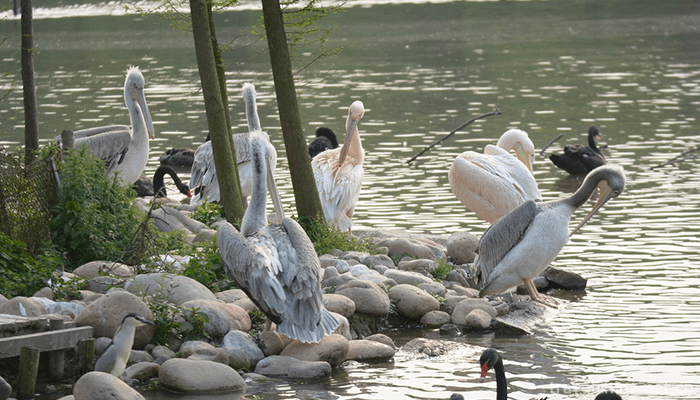
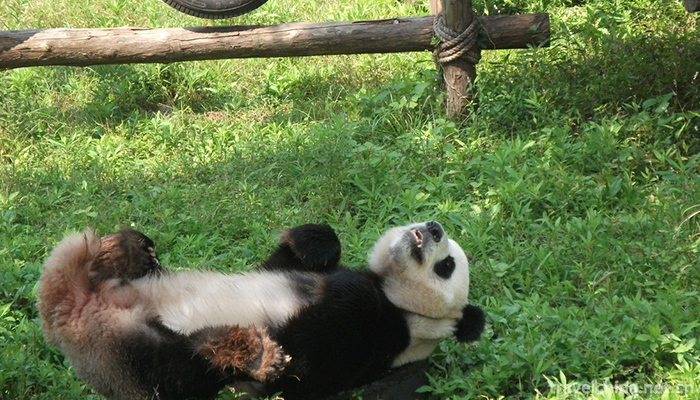
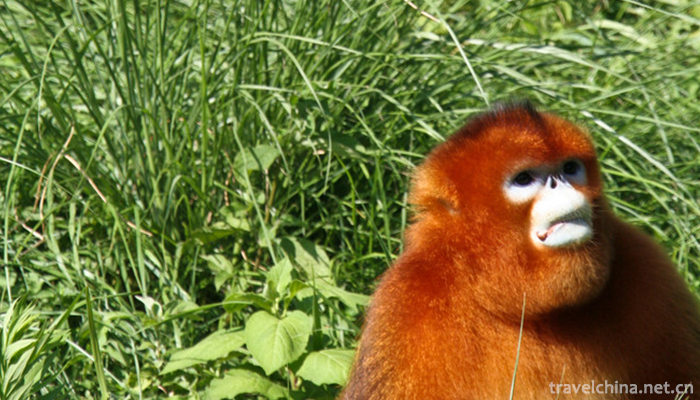
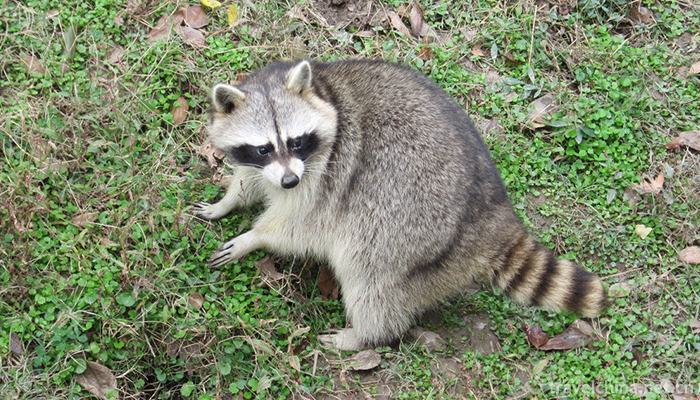
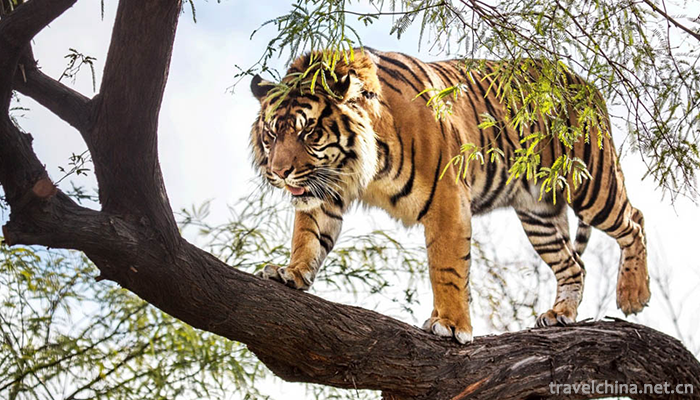
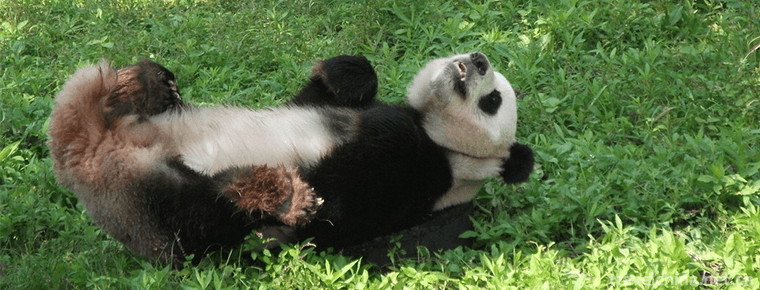
-
1.Shangrao Lingshan Scenic Area
Shangraolingshan Scenic Area, located in the north of Shangrao County, Shangrao City, Jiangxi Province, is a national scenic spot with an area of 160 square kilometers. Lingshan is listed as the "
Time 2018-12-19 -
2.Size Dongtian Scenic Spot
The Size Dongtian Scenic Area (formerly known as the Haishan Scenic Spot and Aoshan Scenic Spot) is located in the southern corner of Hainan Province, 40 kilometers west of Sanya City
Time 2019-01-07 -
3.tea and pastries making skills
Tea making skills, Yangzhou City, Jiangsu Province, local traditional handicraft, one of the national intangible cultural heritage.
Time 2019-04-15 -
4.Dang Tu folk songs
Dangtu Folk Song is one of the national intangible cultural heritages of the local traditional music in Ma'anshan City, Anhui Province.
Time 2019-04-25 -
5.Turn over to the nine floor
The Ninth Floor, also known as the Ninth Floor, is a traditional folk activity popular in northeastern Fujian and southern Zhejiang. It is mostly used in rituals such
Time 2019-04-29 -
6.Tu Wedding
The custom of Tu people's wedding in Huzhu Tu area has a long history. Tu people's wedding custom is gradually formed and developed through the struggle with nature and the long-term practice of produ
Time 2019-06-23 -
7.Recitative
Recitation is a local traditional music form in Changzhou City, Jiangsu Province, which has a high reputation at home and abroad. The art of reciting belongs to "minority culture", which is
Time 2019-07-13 -
8.Bamboo horse
Bamboo horse, also known as running bamboo horse or playing bamboo horse, is an ancient traditional folk dance. The art form of singles performed on the street is like the "two ghosts wrestling&q
Time 2019-08-10 -
9.Shicheng mountain
It is located in Shicheng mountain, Hengjiang Town, Xuzhou District, Sichuan Province. The total area is 5500 mu, including 4100 mu of forest. Shicheng mountain inclines from southwest to northeast. It has a good momentum
Time 2020-10-16 -
10.Hydrological survey of Mianyang
Affected by the landform, Mianyang has abundant precipitation, large runoff, vertical and horizontal rivers and developed water system. There are more than 3000 rivers and gullies in the city. All rivers and gullies flow into Fujiang, Bailongjiang and Xihe
Time 2020-12-14 -
11.Geographical environment of Suining
Suining City is located in the middle of Sichuan Basin and the middle reaches of Fujiang River. It is between 105 ° 03 ′ 26 ″ - 106 ° 59 ′ 49 ″ E and 30 ° 10 ′ 50 ″ - 31 ° 10 ′ 50 ″ n.
Time 2020-12-16 -
12.Guangan waterway
Guang'an port is a "port group" composed of Guang'an port area, Huaying port area, Yuechi port area and wusheng port area distributed in Guang'an section of Qujiang River and Jialing River. Guang'an port is an important support for industrial lay
Time 2020-12-19